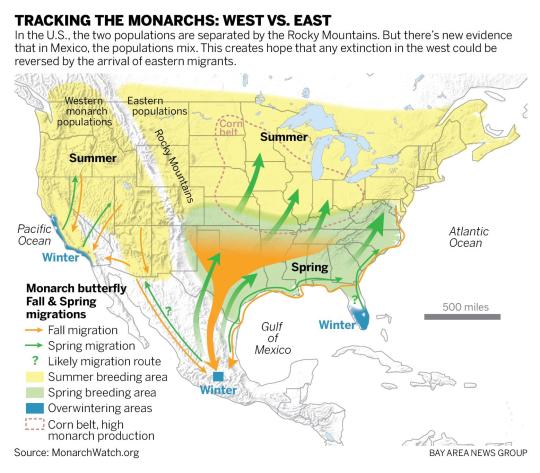Text
Okay. This is a pretty big deal in the world of mycology. Historically fungi have been divided up into either parasites that siphon resources from plants, mutualists that cooperate with them, or saprotrophs that break down decaying organic matter (plant and otherwise.) The genus in question, Mycena, has traditionally been made of saprotrophic species feeding on decaying wood.
However, what scientists are observing is Mycena fungi displaying primitive mutualistic behaviors, specifically providing living plants with nitrogen and getting carbon in return from a living partner, or getting to chow down on the plant's remains once deceased. This shows a significant level of adaptability that hasn't been observed in fungi beforehand, though given how much we don't know about fungi there's a good possibility this isn't an unprecedented event.
It doesn't surprise me one bit that we're seeing this in Mycena. These fungi are especially opportunistic; in fact, that mushroom growing out of a frog's skin that we saw a while back was also a Mycena species. Perhaps we need to add bonnet mushrooms to raccoons, dandelions, and other hardy generalists as symbols of scrappy survival in spite of environmental pressures.
177 notes
·
View notes
Text
small bird was VERY offended that I picked him up off the sidewalk like a potato chip. don't fall asleep on the sidewalk then

6K notes
·
View notes
Text
Shining a light on the origins of bioluminescence ✨✨
A new study led by MBARI collaborators at the Smithsonian’s National Museum of Natural History explores the evolution of bioluminescence, nature’s living light show. A team of researchers, including MBARI Senior Scientist Steven Haddock, has learned bioluminescence first evolved in animals at least 540 million years ago in soft corals.
Scientists have long been curious about the evolution of bioluminescence. To tackle the larger question of why bioluminescence evolved, we needed to know when this ability first appeared in animals. In search of the trait’s earliest origins, the team decided to peer back into the evolutionary history of octocorals, an ancient and frequently bioluminescent group of animals that includes soft corals, sea fans, and sea pens.
Mapping out the branches of the evolutionary tree from fossil records, genetics, and bioluminescent behaviors revealed that some 540 million years ago, the common ancestor of all octocorals was very likely bioluminescent. That is 273 million years earlier than the glowing ostracod crustaceans that previously held the title of earliest evolution of bioluminescence in animals.
MBARI’s Biodiversity and Biooptics Team is working to understand how and why animals produce their stunning luminescence.
Learn more about this illuminating research on our website.
89 notes
·
View notes
Text
sea butterflies, Limacina helicina (Gastropoda: Limacinidae)
source
69K notes
·
View notes
Text
Here it is folks:
My definitive ranking of my least favorite bodies of water! These are ranked from least to most scary (1/10 is okay, 10/10 gives me nightmares). I’m sorry this post is long, I have a lot of thoughts and feelings about this.
The Great Blue Hole, Belize

I’ve been here! I have snorkeled over this thing! It is terrifying! The water around the hole is so shallow you can’t even swim over the coral without bumping it, and then there’s a little slope down, and then it just fucking drops off into the abyss! When you’re over the hole the water temperature drops like 10 degrees and it’s midnight blue even when you’re right by the surface. Anyway. The Great Blue Hole is a massive underwater cave, and its roughly 410 feet deep. Overall, it’s a relatively safe area to swim. It’s a popular tourist attraction and recreational divers can even go down and explore some of the caves. People do die at the Blue Hole, but it is generally from a lack of diving experience rather than anything sinister going on down in the depths. My rating for this one is 1/10 because I’ve been here and although it’s kinda freaky it’s really not that bad.
Lake Baikal, Russia
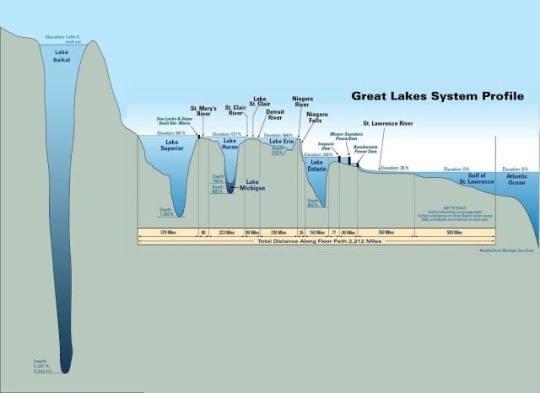
When I want to give myself a scare I look at the depth diagram of this lake. It’s so deep because it’s not a regular lake, it’s a Rift Valley, A massive crack in the earth’s crust where the continental plates are pulling apart. It’s over 5,000 feet deep and contains one-fifth of all freshwater on Earth. Luckily, its not any more deadly than a normal lake. It just happens to be very, very, freakishly deep. My rating for this lake is a 2/10 because I really hate looking at the depth charts but just looking at the lake itself isn’t that scary.
Jacob’s Well, Texas

This “well” is actually the opening to an underwater cave system. It’s roughly 120 feet deep, surrounded by very shallow water. This area is safe to swim in, but diving into the well can be deadly. The cave system below has false exits and narrow passages, resulting in multiple divers getting trapped and dying. My rating is a 3/10, because although I hate seeing that drop into the abyss it’s a pretty safe place to swim as long as you don’t go down into the cave (which I sure as shit won’t).
The Devil’s Kettle, Minnesota

This is an area in the Brule River where half the river just disappears. It literally falls into a hole and is never seen again. Scientists have dropped in dye, ping pong balls, and other things to try and figure out where it goes, and the things they drop in never resurface. Rating is 4/10 because Sometimes I worry I’m going to fall into it.
Flathead Lake, Montana
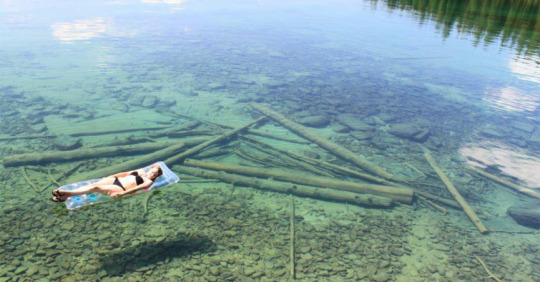
Everyone has probably seen this picture accompanied by a description about how this lake is actually hundreds of feet deep but just looks shallow because the water is so clear. If that were the case, this would definitely rank higher, but that claim is mostly bull. Look at the shadow of the raft. If it were hundreds of feet deep, the shadow would look like a tiny speck. Flathead lake does get very deep, but the spot the picture was taken in is fairly shallow. You can’t see the bottom in the deep parts. However, having freakishly clear water means you can see exactly where the sandy bottom drops off into blackness, so this still ranks a 5/10.
The Lower Congo River, multiple countries

Most of the Congo is a pretty normal, if large, River. In the lower section of it, however, lurks a disturbing surprise: massive underwater canyons that plunge down to 720 feet. The fish that live down there resemble cave fish, having no color, no eyes, and special sensory organs to find their way in the dark. These canyons are so sheer that they create massive rapids, wild currents and vortexes that can very easily kill you if you fall in. A solid 6/10, would not go there.
Little Crater Lake, Oregon
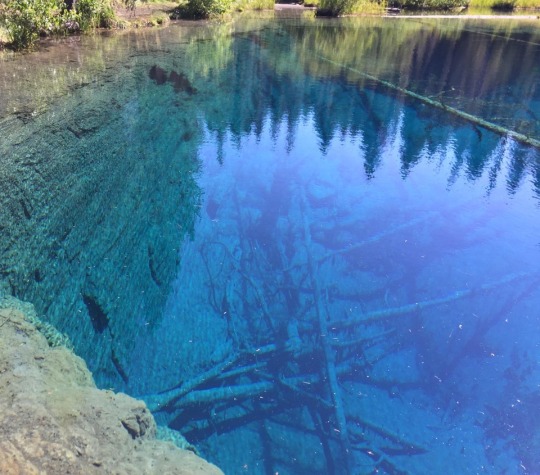
On first glance this lake doesn’t look too scary. It ranks this high because I really don’t like the sheer drop off and how clear it is (because it shows you exactly how deep it goes). This lake is about 100 feet across and 45 feet deep, and I strongly feel that this is too deep for such a small lake. Also, the water is freezing, and if you fall into the lake your muscles will seize up and you’ll sink and drown. I don’t like that either. 7/10.
Grand Turk 7,000 ft drop off

No. 8/10. I hate it.
Gulf of Corryvreckan, Scotland

Due to a quirk in the sea floor, there is a permanent whirlpool here. This isn’t one of those things that looks scary but actually won’t hurt you, either. It absolutely will suck you down if you get too close. Scientists threw a mannequin with a depth gauge into it and when it was recovered the gauge showed it went down to over 600 feet. If you fall into this whirlpool you will die. 9/10 because this seems like something that should only be in movies.
The Bolton Strid, England

This looks like an adorable little creek in the English countryside but it’s not. Its really not. Statistically speaking, this is the most deadly body of water in the world. It has a 100% mortality rate. There is no recorded case of anyone falling into this river and coming out alive. This is because, a little ways upstream, this isn’t a cute little creek. It’s the River Wharfe, a river approximately 30 feet wide. This river is forced through a tiny crack in the earth, essentially turning it on its side. Now, instead of being 30 feet wide and 6 feet deep, it’s 6 feet wide and 30 feet deep (estimated, because no one actually knows how deep the Strid is). The currents are deadly fast. The banks are extremely undercut and the river has created caves, tunnels and holes for things (like bodies) to get trapped in. The innocent appearance of the Strid makes this place a death trap, because people assume it’s only knee-deep and step in to never be seen again. I hate this river. I have nightmares about it. I will never go to England just because I don’t want to be in the same country as this people-swallowing stream. 10/10, I live in constant fear of this place.
Honorable mention: The Quarry, Pennsylvania
I don’t know if that’s it’s actual name. This lake gets an honorable mention not because it’s particularly deep or dangerous, but it’s where I almost drowned during a scuba diving accident.
Edit: I’ve looked up the name of the quarry, it’s called Crusty’s Quarry and is privately owned and only used for training purposes, not recreational diving.
178K notes
·
View notes
Text
Unique albino from Polish zoo named international penguin of the year
/© Gdansk Zoo, © Notes from Poland
An albino penguin born in a zoo in the Polish city of Gdańsk – the only one of its kind kept in captivity in the world – has been chosen as penguin of the year in an international contest.
Five-year-old female African penguin Kokosanka won almost 83% of public votes cast in the final round of March Of The Penguin Madness, an annual contest organised by Penguins International, an organisation committed to preserving and protecting penguins.
As a reward for her success, Kokosanka was presented by staff at her zoo with a cake made from herring caught in the nearby Baltic Sea, her favourite snack.


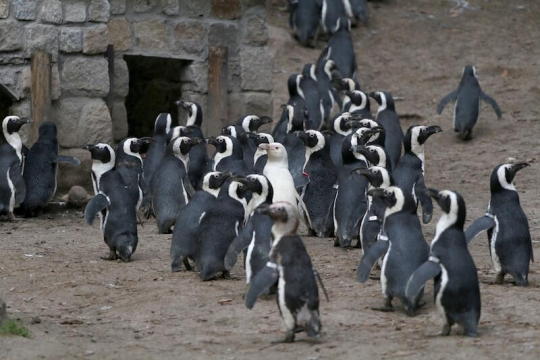
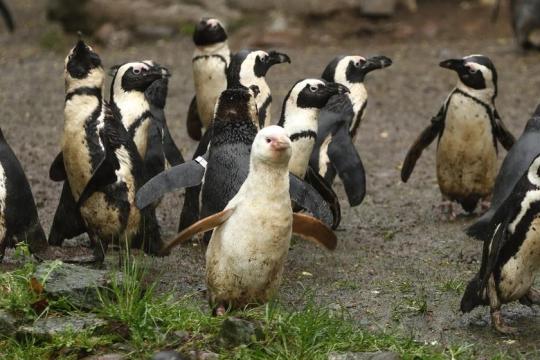

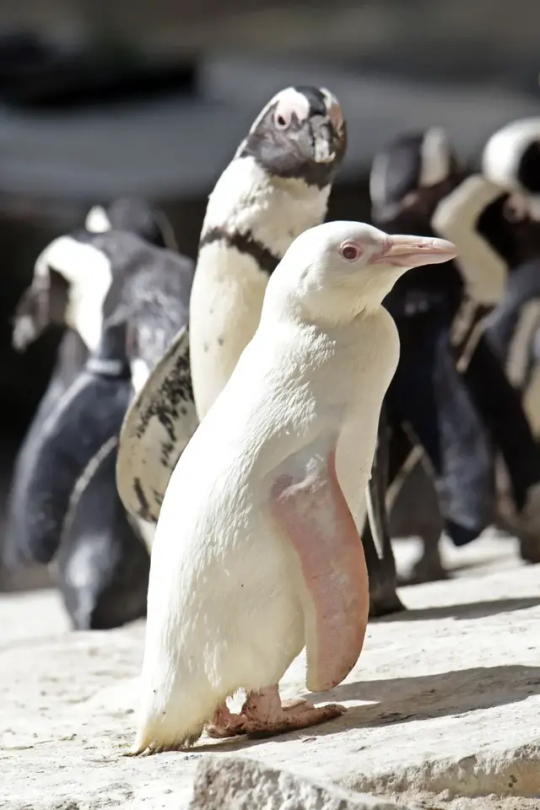
When Kokosanka hatched in Gdańsk in December 2018, her birth was initially kept a secret. Her carers feared that her albinism would mean she had poor health or that she would be rejected by her parents and other penguins.
Although Kokosanka was indeed initially rejected by her parents, with the support of her keepers she has grown into a healthy adult, well integrated with the other 84 penguins living at the zoo on Poland’s northern Baltic coast.
She has also become an informal face of Gdańsk Zoo, which offers Kokosanka-themed merchandise to its visitors.

🤍!
173 notes
·
View notes
Note
Wait! The aquatic mole looks kinda like a platypus. Is that what platypuses are? Aquatic moles? Like, ecological nich-wise, even if not genetics-wise.
more or less, yeah! platypuses are burrowers and that's where they spend their non-water time.


this underground lifestyle is actually fairly easy to diagnose even in animals you've never seen before once you memorize the cardinal rule:
BURROWERS ARE SHAPED LIKE POTATO. potato with feet.


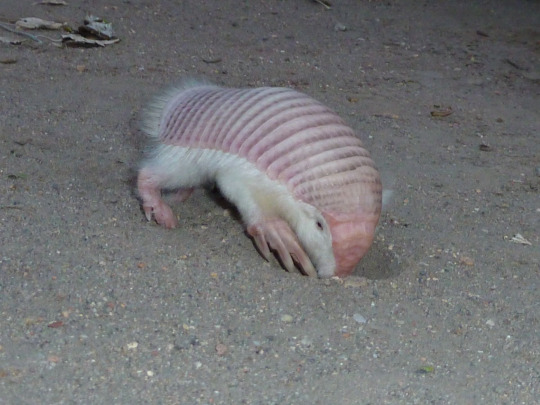
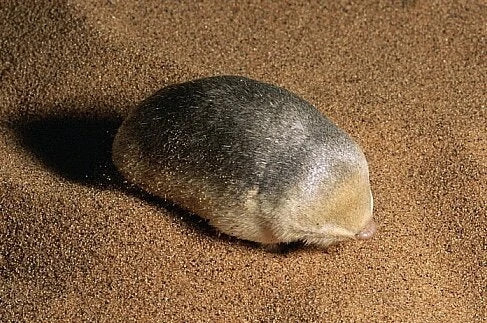
(I think it can digging in the ground for tubers)
2K notes
·
View notes
Photo

A leaf-footed bug and a kudzu bug are sucking juice from a kudzu leaf.
217 notes
·
View notes
Text
A research team consisting of Professor Kyoung-Duck Park and Hyeongwoo Lee, an integrated PhD student, from the Department of Physics at Pohang University of Science and Technology (POSTECH) has pioneered an innovative technique in ultra-high-resolution spectroscopy. Their breakthrough marks the world's first instance of electrically controlling polaritons -- hybridized light-matter particles -- at room temperature.
Polaritons are "half-light half-matter" hybrid particles, having both the characteristics of photons -- particles of light -- and those of solid matter. Their unique characteristics exhibit properties distinct from both traditional photons and solid matter, unlocking the potential for next-generation materials, particularly in surpassing performance limitations of optical displays. Until now, the inability to electrically control polaritons at room temperature on a single particle level has hindered their commercial viability.
Read more.
15 notes
·
View notes
Text
How Moths Confuse Bats

When your predators use echolocation to locate you, it pays to have an ultrasonic deterrence. So, many species of ermine moths have structures on their wings known as tymbals. (Image credit: Wikimedia/entomart; research credit: H. Mendoza Nava et al.; via APS Physics)
Read the full article
97 notes
·
View notes
Text
A new analysis of fossilized vertebrae discovered in western India has revealed the existence of a giant snake species that may have measured some 11 to 15 meters (36.1 to 49.2 feet) in length when fully grown.
The researchers behind the work, from the Indian Institute of Technology Roorkee, acknowledge some uncertainty in their estimations, but they suggest the newly identified reptile they've named Vasuki indicus may have equaled the size of the largest snake in history, the Titanoboa, which died out some 58 million years ago.
Compared with snake species still slithering around today, V. indicus is way ahead. As far as verified measurements go, the longest living snake right now measures a paltry 7.67 meters.
Continue Reading.
52 notes
·
View notes
Photo

Early Humans sheltered in this lava tube 10,000 years ago—and it’s still in use today
Fossils and stone tools show that a cave in Saudi Arabia has been used as shelter by humans for millennia, up to the present day.
https://www.scientificamerican.com/article/early-humans-sheltered-in-this-lava-tube-10-000-years-ago-and-its-still-in/
22 notes
·
View notes
Text
I am once again thinking about digging holes

It's so fucked up that digging a bunch of holes works so well at reversing desertification
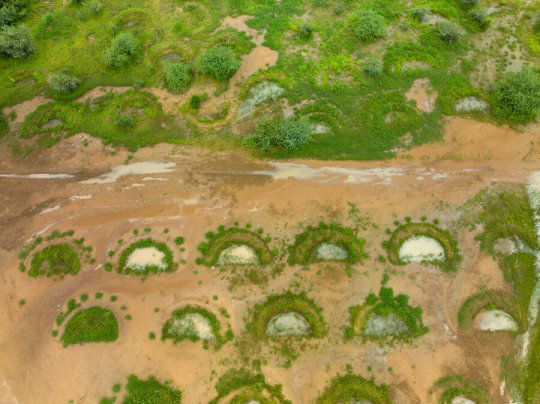
I hate that so much discourse into fighting climate change is talking about bioenginerring a special kind of seaweed that removes microplastics or whatever other venture-capital-viable startup idea when we have known for forever about shit like digging crescent shaped holes to catch rainwater and turning barren land hospitable
46K notes
·
View notes
Text
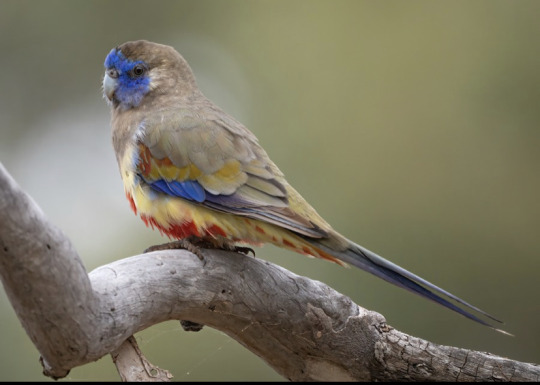
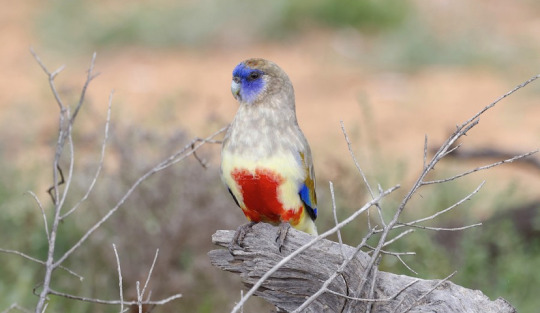



the greater bluebonnet is a small parrot found in southeastern and central australia. they are considered a sedentary or resident species and do not migrate. they mostly remain in pairs or congregate in small groups of up to ten; while they are social, they are not as gregarious as some other parrots. they are known to be aggressive and difficult to breed by aviculturists. females are slightly duller than males, with less red on their bellies. they primarily feed on seeds, but are omnivorous and have a varied diet that also includes nectar, fruit, and insects.
4K notes
·
View notes
Photo

Ancient sea creature fossils discovered in Hubei
A rare fossilized reef limestone forest with a diverse collection of sea creature fossils was recently discovered in Lichuan, Enshi Tujia and Miao autonomous prefecture in Hubei province, China.
https://www.chinadaily.com.cn/a/202404/16/WS661e3a00a31082fc043c245a_2.html
12 notes
·
View notes
Note
hiya! i’ve been wondering this for a while but, when/why did humans lose the ability to eat raw meat?
I’ll tell you a secret- humans never actually lost that ability! you are just as capable of chowing down on a freshly-killed antelope as, say, a chimpanzee is.

“wait, what?”
this is because raw meat, when it’s fresh off the hoof, is actually pretty clean in terms of harmful bacteria! bacteria only really shows up to the meat party when raw meat is allowed to sit for a while, like on a supermarket shelf, or the side of the road.
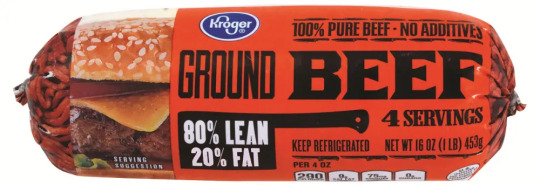
euuuugh!
but what there IS plenty of in raw meat is parasites! meat is just chock full of those little guys, which is why most wild predators are ALSO chock full of various internal parasites. always wash your hands after you shake paws with a lion, kids!

“WAIT, WHAT??”
this, combined with the fact that cooked meat is easier to digest and offers more energy per gram, is why early humans started charring their dinner over the fire before they tried to take a bite.

so I mean, you COULD just grab a squirrel and chomp down, but why would you do that when hamburgers are a thing? early humans knew what they were talking about.

give me your pickles if you don’t want em, though.
8K notes
·
View notes
